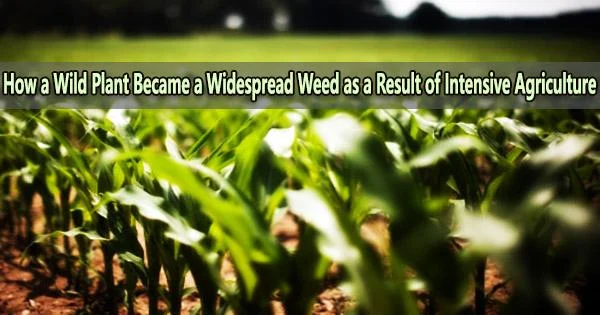Recent research published in Science demonstrates how the development of modern agriculture has transformed the native common waterhemp plant of North America into a troublesome agricultural weed.
187 waterhemp samples from current farms and nearby wetlands were compared with more than 100 historical samples dating back as far as 1820 that had been housed in museums across North America by an international team of researchers lead by scientists at the University of British Columbia (UBC).
The genetic make-up of the plant over the past 200 years allowed the researchers to observe evolution in action across changing habitats, just how the sequencing of ancient human and neanderthal remains has clarified important questions about the history of humanity.
“The genetic variants that help the plant do well in modern agricultural settings have risen to high frequencies remarkably quickly since agricultural intensification in the 1960s,” said first author Dr. Julia Kreiner, a postdoctoral researcher in UBC’s Department of Botany.
The weed’s genome has hundreds of genes that help it thrive on farms, including changes that typically occur in genes associated to drought tolerance, quick growth, and pesticide resistance.
“The types of changes we’re imposing in agricultural environments are so strong that they have consequences in neighbouring habitats that we’d usually think were natural,” said Dr. Kreiner.
These results highlight the enormous potential of studying historical genomes to understand plant adaptation on short timescales. Expanding this research across scales and species will broaden our understanding of how farming and climate change are driving rapid plant evolution.
Dr. Stephen Wright
The research could help in conservation efforts to protect natural regions in agriculturally-dominated environments. To lessen the evolutionary impact of farms, reduce gene flow from agricultural areas and protect more secluded natural populations.
Common waterhemp is native to North America and was not always a problematic plant. Nevertheless, due to genetic modifications, such as herbicide resistance, the plant has recently grown to the point where it is almost impossible to remove from farms.
“While waterhemp typically grows near lakes and streams, the genetic shifts that we’re seeing allow the plant to survive on drier land and to grow quickly to outcompete crops,” said co-author Dr. Sarah Otto, Killam University Professor at the University of British Columbia. “Waterhemp has basically evolved to become more of a weed given how strongly it’s been selected to thrive alongside human agricultural activities.”
Notably, five out of seven herbicide-resistant mutations found in current samples were absent from the historical samples.
“Modern farms impose a strong filter determining which plant species and mutations can persist through time,” said Dr. Kreiner. “Sequencing the plant’s genes, herbicides stood out as one of the strongest agricultural filter determining which plants survive and which die.”
Since 1960, waterhemp with any of the seven herbicide resistant mutations has generated 1.2 times as many surviving offspring annually as plants without the mutations.
Although less frequently, herbicide resistant mutations have been found in natural habitats, which raises concerns about the costs associated with these adaptations for plant life in non-agricultural contexts.
“In the absence of herbicide applications, being resistant can actually be costly to a plant, so the changes happening on the farms are impacting the fitness of the plant in the wild,” said Dr. Kreiner.
Agricultural methods have also altered the geographic distribution of specific genetic variations. A weedy southwestern species has moved steadily eastward across North America over the past 60 years, introducing its genes into local populations as a result of its competitive advantage in agricultural settings.
“These results highlight the enormous potential of studying historical genomes to understand plant adaptation on short timescales,” says Dr. Stephen Wright, co-author and Professor in Ecology and Evolutionary Biology at the University of Toronto. “Expanding this research across scales and species will broaden our understanding of how farming and climate change are driving rapid plant evolution.”
“Understanding the fate of these variants and how they affect plants in non-farm, ‘wild’ populations is an important next step for our work,” according to Professor John Stinchcombe of the University of Toronto, a coauthor on the study.
















